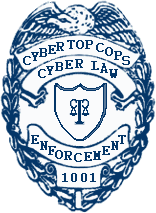Banking Phishing Scams
Browse the Web with Firefox for protection against spyware, hackers, spoofing and phishing scams
Banking phishing scams (also called Bank Phishing Spams) involves the use of e-mails, spoofed to appear as if they are sent from well known financial institutions. These e-mails normally contains a single image hyper link to lure the victim to a server where sensitive information like account numbers, credit card numbers, passwords and pins are requested, under the false impression that the information is needed to update the client's account information. It is common protocol practised by most banks worldwide not to send e-mails like this to their clients. It is also easy to tell that the "link" supplied in the e-mail is fraudulent because it is an image embedded into the e-mail creating the impression of a single link that the user can click on, while the whole image in fact is a link. No ethical and honest institution sends out e-mails like this. The image is normally followed by senseless text (called hash buster text) in order to fool spam filters. Again, no professional institution includes senseless, confusing information in their correspondence with their clients.
Remember, when your bank suspends access to your account, they will request that you visit them in person, at one of their official branches, with a valid identification document, to have the suspension removed. This will never be done via e-mail or the telephone. Do not reply to such an e-mail or use any of the contact information contained therein, rather contact your bank directly by using reliable contact information.
Below are links to copies of typical Banking phishing scam e-mails. Note that the original formatting of the e-mails was preserved and this is more or less how they look when you open them. We have disabled the links in the e-mails because they point to dangerous locations that may result in identity theft, financial loss or they might infect your computer with viruses or spyware.
- Abbey Phishing Scams
- ABSA Bank Limited Phishing Scams
- Alliance Leicester Phishing Scams
- American Express Phishing Scams
- ANZ Internet Banking Phishing Scams
- APEX ACH Phishing Scams
- Arizona Central Credit Union Phishing Scams
- Arizona Federal Phishing Scams
- BancorpSouth Phishing Scams
- Bank of America Phishing Scams
- Bank Of Lancaster County Phishing Scams
- Bank Of Scotland Phishing Scams
- Barclays Bank Phishing Scams
- BB&T (Branch Banking and Trust) Phishing Scams
- Capital One Phishing Scams
- Carolina Trust Bank Phishing Scams
- Chase Online Banking Phishing Scams
- Citizens Bank Phishing Scams
- Credit Union National Association Phishing Scams
- Desjardins Bank Phishing Scams
- E-Gold Bank Phishing Scams
- Fifth Third Bank Phishing Scams
- Flagstar Bank Phishing Scams
- First Hawaiian Bank Phishing Scams
- GTE Federal Credit Union Phishing Scams
- Halifax Phishing Scams
- HSBC Phishing Scams
- Metro Credit Union Phishing Scams
- MidAmerica Bank Phishing Scams
- National Westminster Bank Phishing Scams
- Nationwide Bank Phishing Scams
- North Fork Bank (NFB) Phishing Scams
- North Island Credit Union
- PNC Bank Phishing Scams
- Posteitaliane Phishing Scams
- RegionsNet Online Banking Phishing Scams
- Royal Bank Of Scotland Phishing Scams
- Smile Internet Bank Phishing Scams
- Sparkasse Phishing Scams
- Sterling Online Banking Phishing Scams
- TD Canada Trust Phishing Scams
- U.S. Bank Phishing Scams
- Wachovia Phishing Scams
- Wells Fargo Phishing Scams
- Westar Federal Credit Union Phishing Scams







